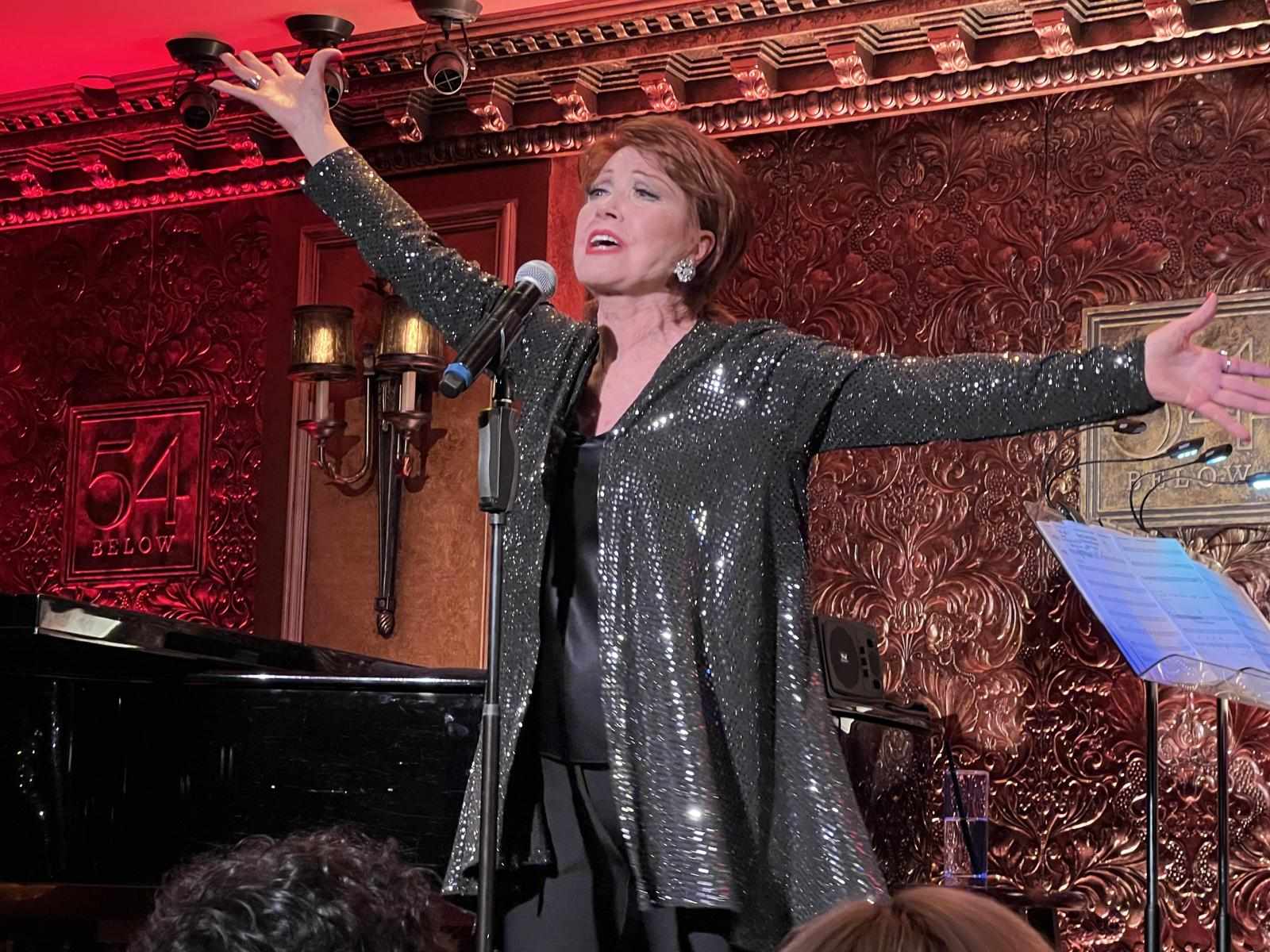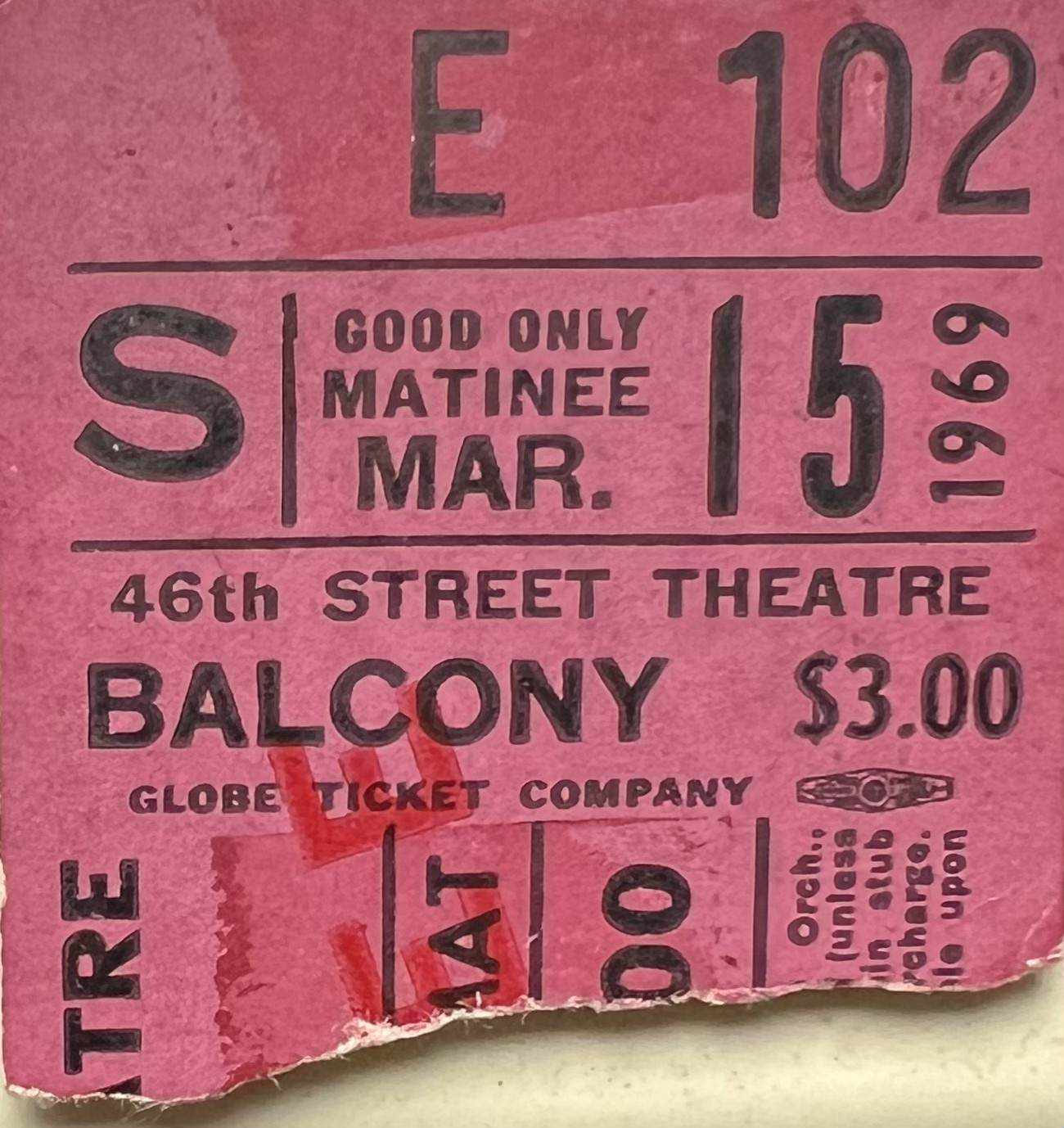
Due to the positive response to Tuesday's column on Ethel Shutta and the history of her performance of "Broadway Baby" from Follies, it seemed appropriate to explore another Weissman Girl's big number with Mary McCarty's powerful rendition of "Who's That Woman?" Even after close to fifty years, Michael Bennett's remarkable staging of it is still considered one of the best of all time. Stick around till the end (where a special treat awaits you) in today's "Theatre Yesterday and Today."
In late 1970, when Mary McCarty auditioned for the original Broadway production of Follies, she was just what producer/director Harold Prince and casting director Joanna Merlin were looking for: an actress/singer with a past connected to an era that had sadly passed her and her compatriots by. For when she auditioned for Follies, McCarty hadn't been seen on Broadway in a musical since 1950. To be clear, Prince and Merlin weren't looking for has beens, but "hey lady aren't you whozis?" was a feather in the cap of anyone who walked into the audition room. "I'd called the Hal Prince office myself — you do a lot of that, agent or not — and said, ‘I hear you are using, um, varied ages.’ Nice euphemism, right?" Which is how McCarty ended up singing for everybody four times, and, as she spelled it out, "they weren't sure which role I might do."
The plot of Follies was that of a reunion of old showgirls on the stage of the Weissman Theatre, veterans of his follies ("every year between the wars," as the old man puts it) and the box office attraction of four of the five top billed stars all having sizable connections to the past was purposefully intended for Follies' target audience. And McCarty's past was a doozy.
Mary McCarty was born September 27, 1923 in Winfield, Kansas. Her parents separated shortly thereafter, and she was raised by her mother and great-grandmother in downtown Los Angeles, “sort of an Eighth Avenue equivalent," she told the New York Times in 1977. Being a natural singer, young Mary was put into show business by her stage mom: "My mother didn't push. She aimed me." The Great Depression was on and, as early as age five, she was “aimed” into vaudeville (what was left of it) with many appearances at the Paramount Theatre in downtown Los Angeles (ironically torn down in 1962 to make way for a parking lot — just like the fictional Weissman). She also found her way into dozens of feature films and shorts, either in non-speaking or small roles (you can spot her as a fifteen-year-old opposite a ten-year-old Shirley Temple in 1938's Rebecca of Sunnybrook Farm). Before she turned eighteen, her mother insisted she go to New York (alone) in order to play the great night spots. She told the famed columnist Louella Parsons that "she took along two chickens her mother fried for her to stave off 'starvation.'" She made good, eventually headlining at the Blue Angel, the Village Vanguard and the Hotel Plaza's Persian Room with her vibrant singing style and comedic chops.
It wasn't until she was twenty-five that she landed her first Broadway show, Sleepy Hollow, a musical retelling of Ichabod Crane and the Headless Horseman. Poor reviews closed it in nine days, but McCarty got a nice mention from Brooks Atkinson in the New York Times: "We are getting some attractive young people in musical shows these days. They are free from night-club pallor (what a line!). There is Mary McCarthy, as a hot-tempered hussy." Okay, Atkinson got her name wrong, but a mention is a mention.
Fortunately, McCarty found herself immediately cast in another musical, which opened on Broadway three months after Sleepy Hollow closed. It was a revue titled Small Wonder, and in it, McCarty got to really show her stuff alongside such new (and soon-to-be well known) performers such as Jack Cassidy, Tom Ewell, Alice Pearce, Joan Diener and Tommy Rall. With a standout number, "Flaming Youth," McCarty was able to showcase her singing, comic abilities and dancing, and it proved a jumping off point (literally), as you can see from this photo:

It landed her a chance a few years later to do the number on a variety show, and luckily it's available on YouTube. Not only is it a privilege to see McCarty in her prime, but the dance is by none other than Gower Champion, in what marked his Broadway debut as a choreographer (he would eventually win five Tonys in that category, not to mention three additional ones for direction).
McCarty's next Broadway show was a featured role in the Irving Berlin musical Miss Liberty, which purported to tell the story of how the Statue of Liberty came to situate in New York Harbor (it's almost entirely made up). She sang two wonderful songs, one of which, "Homework," is a personal favorite (in spite of lyrics that would never pass muster today since it's about a way-too grateful housewife). But there's no denying it features Berlin at his best surprise rhyming and McCarty's way with phrasing, especially the way she trills the word "genius," absolutely sends me. And in spite of running a year, the show was not a success — a rarity for Berlin and company — and it wasn't long before McCarty was back to nightclubs, with occasional forays to Hollywood, where she appeared in films you can catch now on Turner Classic Movies like Pillow Talk and My Six Loves.

At the time she booked Follies, McCarty was in New York headlining at her own nightclub, Marymary at Second Avenue between 64th and 65th Streets. Eventually, most nights after her Follies curtain call, she would head over and perform a late nite set. Her club was a duplex with a bar on the ground floor and a small room upstairs. Reviewing her set in the New York Times, music critic John C. Wilson praised her writing, "Miss McCarty brings back a marvelous slapstick flavor that has been missing from our lives for too many years while the one‐line gag has been smirked off as comedy. It's good to have an earthy comic back in town."
As for "Who's That Woman?," the authenticity McCarty brought to the song was made even more palpable by Bennett's ingenious staging. The story of how composer Stephen Sondheim wrote it and then watched it transformed into something entirely different from what he had in mind is enough for a column on its own. Writing about it in the first of his two-volume memoir Finishing the Hat, Sondheim states: "What Michael did was to take a lightweight, semi-camp pastiche lyric and mine it for all its emotional resonances as well as its imagery." Sondheim goes on to say that Bennett "devised one of the most brilliantly staged numbers in Broadway history (and very Broadway it was)."
And now for the surprise mentioned earlier. According to the person who posted this on YouTube, it is silent film footage from the end of the Follies run in Los Angeles in 1972, beautifully dubbed off a live performance. Janet Blair subs as Sally, making the voice still Dorothy Collins, provided by a soundboard tape made during its Broadway run. It's really all about McCarty (and, of course, Bennett), so enjoy seven minutes of something I certainly never expected to see again since that afternoon I saw Follies at the matinee before its opening on April 4, 1971 (also pay particular attention to the genius of Jonathan Tunick's orchestrations).
No mention has been made as yet of McCarty's final Broadway musical in 1975, the very first Matron "Mama" Morton in the Fosse/Kander & Ebb original production of Chicago. She only had two songs, "When You're Good to Mama" and "Class," but wow! I saw her in the show three times.

Her last Broadway show brought McCarty her one and only Tony nomination... and it was for a straight play. She played opposite Liv Ullman in a 1977 revival of Eugene O'Neill's Anna Christie, directed by the playwright's foremost interpreter, José Quintero. McCarty's story of how it came about is so touching, I'll leave it to her to tell it in her own words, by way of an interview she gave to Tom Burke in the New York Times in 1977:
"Quintero didn't ask her to read for Marthy Owen, but it's the first time that's happened, and probably, she predicts, the last. 'So strange. First, agent-wise, I freelance—there are more chances, not sticking with one representative. This young agent called, I was still in Chicago, to ask if I'd see Quintero about Anna Christie. Instantly, I saw Marthy as a chance to expand, grow, play something completely new, a real character part." She spoke to Chicago director Bob Fosse, who told her, 'Mary, as your friend, I'd say, go for it, it could be the break of a lifetime.'"
"Their meeting was brief. 'José simply said, ‘I've seen everything you've done.’ I was amazed he'd seen me in anything. Then, ‘How would you feel if I offered you Marthy?’ I said, ‘I'd find that very interesting, but I know I haven't a chance of getting it.’ José said, ‘But I've already decided.’" And they both started to cry. 'I'm very emotional, so's José. In my case, they were tears of surprise: that this had actually happened, and without a reading!'"

McCarty returned to Hollywood after that and landed a series regular on the CBS hospital drama Trapper John, M.D. Sadly, it was short-lived, as she died in her sleep on April 30, 1980 before work was to begin on its second season. Only fifty-six years old, McCarty was survived by Margaret Lindsay, her longtime companion (whom almost no obituaries mentioned forty years ago), herself a working actress of note, who died one year later.
If you enjoy these columns, check out Up in the Cheap Seats: A Historical Memoir of Broadway, available at Amazon.com in hardcover, softcover and e-book. And please feel free to email me with comments or questions at Ron@ronfassler.org.





















Write a comment ...